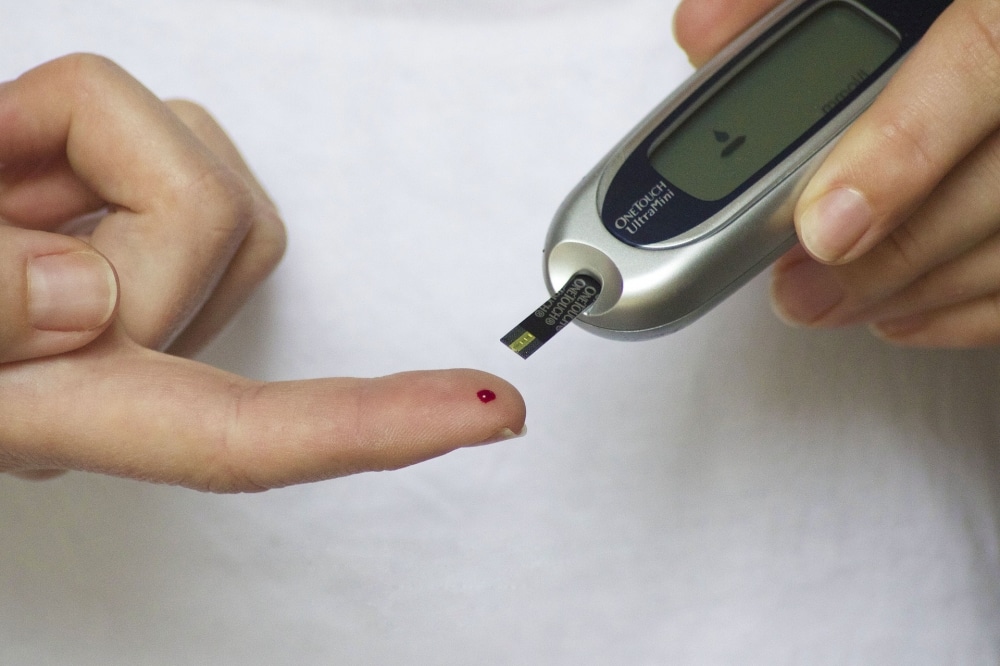

Diabetic neuropathy is a complication of long term diabetes mellitus (type 1 or type 2) in which the nerves are affected / damaged by the disease. It affects approximately 50% of people with diabetes and many don’t even know they have it until it is diagnosed by a doctor. Of those people with diabetic neuropathy, approximately 50% will experience significant (neuropathic/nerve) pain – this is then known as painful diabetic neuropathy (PDN) or painful diabetic peripheral neuropathy (peripheral meaning of the nerves outside of the central nervous system). As the diabetes epidemic worsens, the incidence of PDN is only going to increase.
PDN most commonly affects the nerves of the feet (and less commonly the hands). Typical signs and symptoms include:
These symptoms can also lead to deformities or sores in the feet and an increased risk of falls, which may lead to serious injury.
In most cases, the pain is worse at night and can disturb sleep. Daily activities and functioning may also be affected. Patients with PDN are also likely to develop depression.
Usually, both of the feet (or hands) are affected, with symptoms eventually spreading up the limbs in a stocking (or glove) like pattern.
If you have diabetes and experience any of the above symptoms, it is important to talk about them with your doctor.
Tests to assess nerve function and detect nerve damage may be performed. These include nerve conduction studies and electromyography (EMG). Foot exams may also help to diagnoses peripheral diabetic neuropathy.
Several studies have shown that numerous factors lead to the development of diabetic neuropathy. High blood glucose levels (hyperglycaemia) and poor control of that is a prime culprit, as well as high blood fat levels (hyperlipidaemia, especially triglycerides) and other metabolic factors.
For painful diabetic neuropathy, studies further implicate vascular factors, such as abnormalities in arteries, veins and small blood vessels, and impaired blood flow in peripheral nerves and in the skin (microcirculation), especially of the feet. Recent studies have also indicated involvement of the central nervous system, especially the autonomic nervous system.
Risk factors for diabetic peripheral neuropathy (and hence PDN) include:
High blood glucose levels (hyperglycaemia) significantly increases the risk of PDN (primarily in diabetes type 1) as this is a strong driver of nerve injury.
Metabolic syndrome, which is a collection of conditions, is another significant driver of PDN. This includes obesity, hypertension, low HDL cholesterol (good cholesterol) and hypertriglyceridemia (high level of triglycerides, a type of fat, in the blood).
Unfortunately, there is no cure for PDN. The focus is on early diagnosis of neuropathy, management of the underlying diabetes and employing strategies or therapies to prevent or slow the progression of diabetic peripheral neuropathy and hence PDN, otherwise, treatment is focused on relieving symptoms.
The main prevention/management strategy is maintenance of near-normal blood glucose levels (glycaemic control), although this is difficult to achieve in diabetes type 2 patients. Intensive glycaemic therapy has been shown to effectively reduce the risk of PDN in patients with type I diabetes.
Diabetic patients may also reduce their risk by:
Analgesic Medications – Certain classes of drugs used to treat neuropathic pain may be used for PDN. Their availability may differ between countries, depending on whether they have been approved or not. These include:
Non-Pharmaceutical – Exercise therapy may improve pain and symptoms in patients. Other treatments include transcutaneous electrical nerve stimulation (TENS), spinal cord stimulation (SCS), deep brain stimulation (DBS), electromagnetic stimulation, however the evidence of effectiveness for these therapies is limited.
There is a dire need for innovative drugs to treat neuropathic pain conditions. Current drug options are rather non-specific and many are not well tolerated. With a better understanding of the mechanisms causing diabetic neuropathy and neuropathic pain, more effective treatments, with hopefully less side effects, may be developed.
One promising drug, known as a dual enkephalinase inhibitor, was shown to be effective in reducing pain in patients who were not getting enough relief with their current analgesic medication(s). Enkephalins are analgesic compounds that the body produces during times of pain (or stress etc), though they are normally quickly degraded. This drug inhibits their degradation at the site of peripheral nociceptors (which are sensory receptors located on the ends of peripheral nerves that detect and relay painful signals to the brain).
Also promising is a drug that binds to and blocks the activity of the angiotensin II type 2 receptor (AT2R), which is found on peripheral nerves and has a role in producing peripheral neuropathic pain and chronic inflammatory pain. The drug has demonstrated clinical validity in a clinical trial in patients with postherpetic neuralgia and is soon to be trialled in PDN.
Genesis Research Services conducts clinical trials for a range of painful conditions. To view currently recruiting studies or register your interest for future studies, click here or call us on (02) 4985 1860.
View our currently recruiting studies:
Register your interest for future studies:
© Genesis Research Services, 2023